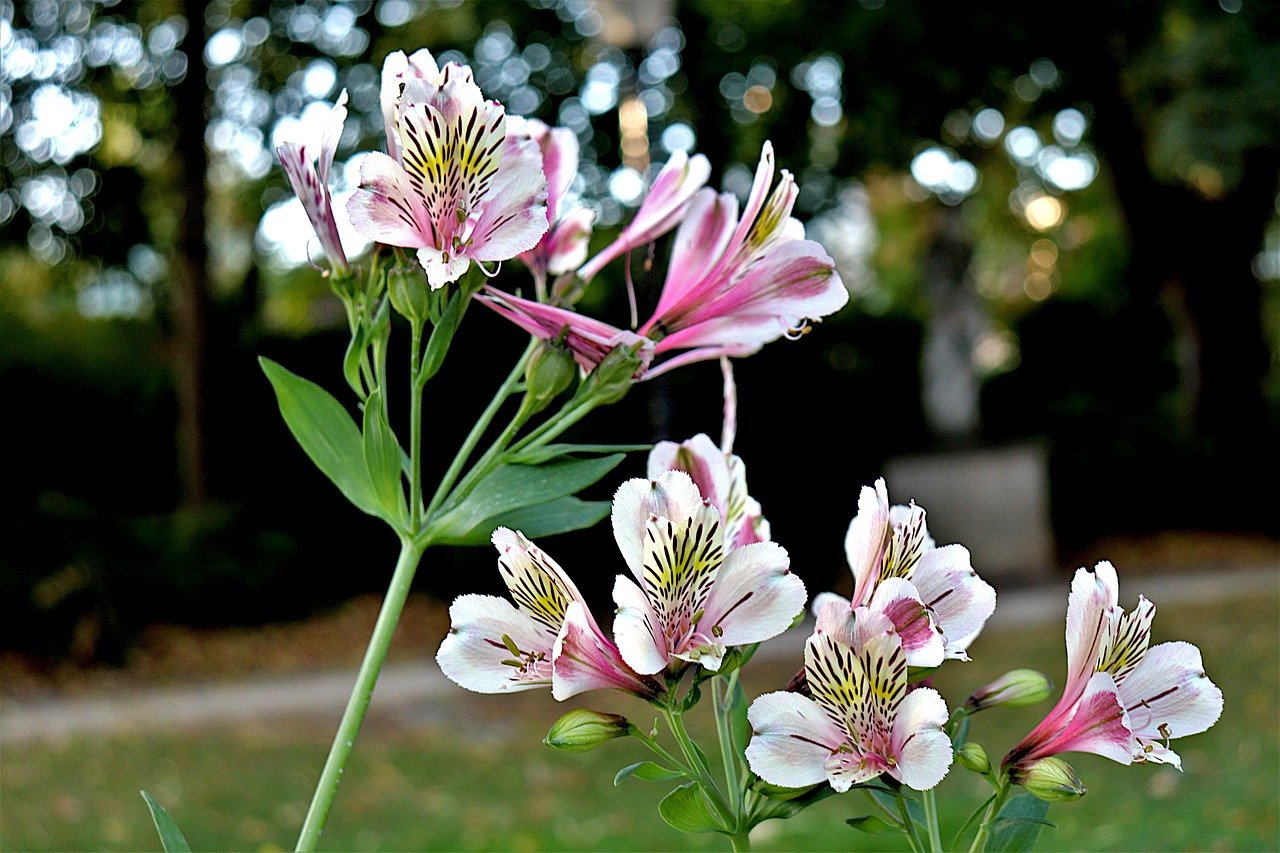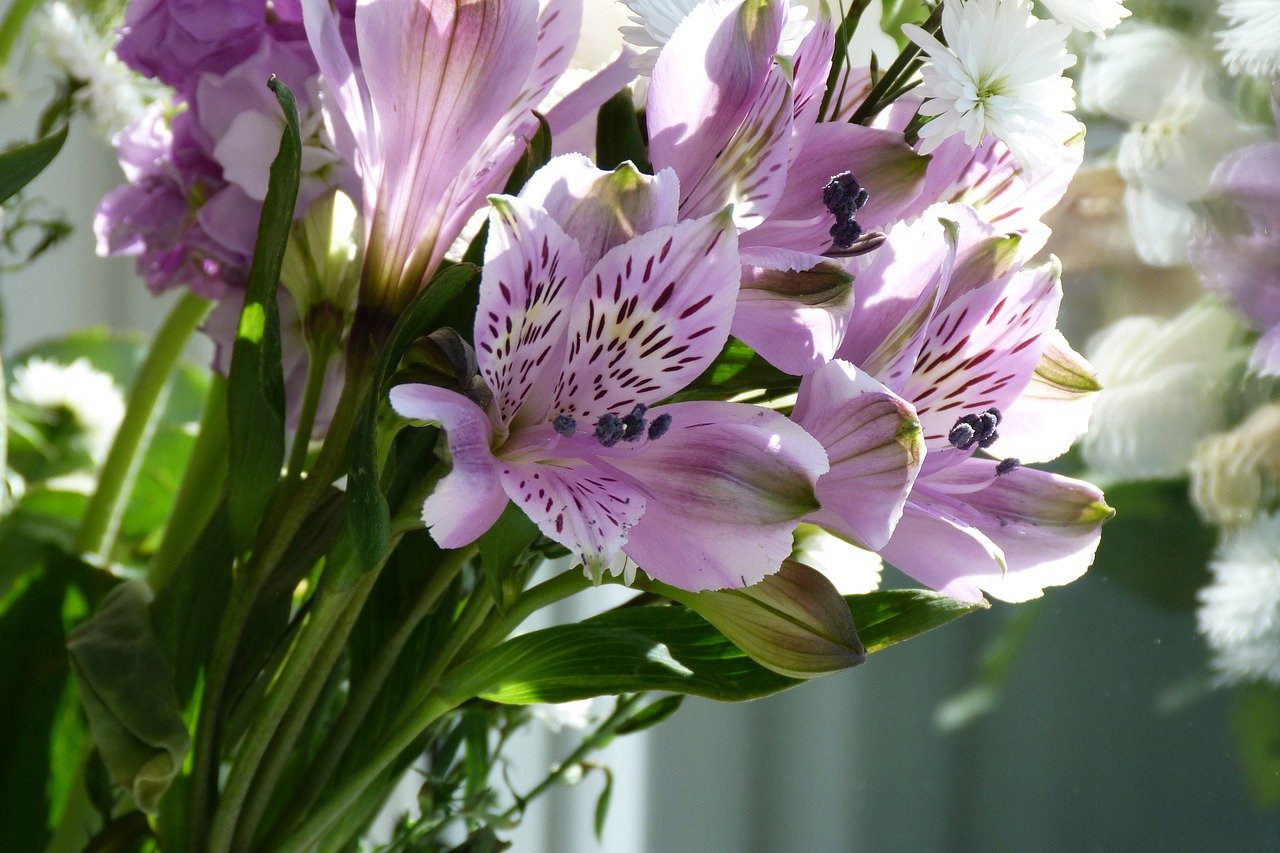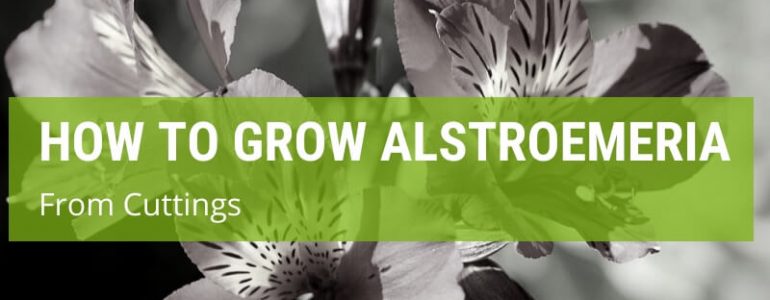Alstroemeria is a beautiful, striking plant that is related to the lily (in fact its common name is Peruvian Lily). Originating from South America, they produce spectacular blooms that are bursting with colour, and look attractive both as cut flowers or growing outside in the garden.
The flowers range in colour from white, salmon and pink, through to bright orange, red and purple, so you can be sure of finding a type that suits your garden colour scheme.
You can grow them from seed, but they tend not to thrive very well, and you’ll be lucky to get about 20% that even germinate, so the best way to grow them is from cuttings. You may be wondering how to grow Alstroemeria from cuttings, so we have put together a fail safe guide for you.
How to grow Alstroemeria from cuttings

1. These plants have a root system known as Rhizomes, which are horizontal underground stems. These are what will grow your beautiful flowers, and they are much easier to grow this way than from seed. Here’s my guide on how to divide the tubers.
The rhizomes should should be dug up in the Spring, and when you do it it is important to make sure you get all the roots as well as the growing shoots. Take care with your rhizomes, as they can be fragile and need to be handled with care.
2. Next, plant them in a rich, fertile, free draining soil which is either neutral or slightly acidic. Their holes should be 6-8 inch (15-20cm) deep, and if you are planting them outside they need to be spaced about 24 inches (60cm) apart, to allow them room to spread. If you are planting in containers, allow one bunch of rhizomes per 1 gallon (5 litre) pot to give them enough space.
3. Cover the rhizomes with the soil or compost, and lightly tamp them down. You should generously water the plant at first, making sure the soil is consistently moist, but don’t allow it to get sopping wet. The shoots should pop up relatively quickly, and Alstroemeria can flower 10 to 15 weeks after they were planted.
4. Another way that you can try is to simply plant an Alstroemeria that has been pulled from the ground. As long as the stem has a few roots on it, you should be able to grow it – place the root into a Rooting Compound, then plant it in some good seed compost, water it in, and hope!
Alstroemeria care

Alstroemeria is an easy plant to grow, and should reward you with beautiful blooms quickly – as long as you look after it well. That being said, it doesn’t need as much care and attention as some other plants, and you won’t have to do too much to it to keep it healthy.
A. Temperature
Because they hail from warmer climates than the UK, Alstroemeria can handle a sunny spot in your garden without wilting. They do prefer full sun, but will tolerate partial shade too. They will happily winter out without too much trouble, though as with most plants you will notice some die back as the colder months hit.
For the first two winters you should mulch the plants with bark or fleece to protect the roots from frost damage; after two years they should be hardy enough to survive on their own – but you may wish to continue mulching to give them a better chance, especially if it is a particularly cold year.
B. Soil
Alstroemeria like a neutral or slightly acid soil that is well drained. You can add fertiliser to the soil before you plant, to make sure there is plenty of nutrients for the plant to keep it healthy and strong.
If you are planting into a pot you should make sure that you add about 20% grit for drainage, as they don’t like to get their feet too wet.
C. Water and feed
Good drainage is essential for these plants. They are used to hot countries, so over watering can cause serious problems and will lead to rotting of the roots and the death of the plant; just give them a drink when you notice the soil is dry, once they are fully established.
When your plant is in bloom it will benefit from a few extra nutrients, so give it a dose of a high potassium fertiliser such as potash (you can find this in just about any garden shop).
D. Pruning
For the first year that you have your Alstroemeria, you should cut the flowers. Any time after this you need to be pulling the stalks up at the base, as cutting them can affect the rhizomes – they will respond to the damage above ground, and will die.
Each flower has its own stalk, so pulling up a few stalks will not harm the plant itself. If you want to encourage the growth of your plant, regularly dead head the spent blossoms, so the plant isn’t wasting energy on these and will put its efforts into new ones instead.
E. Diseases and pests
Alstroemeria are pretty hardy; the main problem they have is root rot from over watering. Don’t give them too much to drink too regularly, and you should avoid this problem.
They are susceptible to damage from aphids, whitefly and spidermites, so keep an eye out for these critters on the stems of your plants.
If you spot any, they should be removed with a strong jet of the hose, then the plant treated with an insecticidal soap.
Slugs and snails, the bane of gardeners worldwide, can also be a problem. You can leave out beer traps, lay down copper tape, or put out slug pellets (but try to find ones which don’t harm pets, children or other wildlife).
Here’s my guide on what to do if tubers are not growing.
Final words
Alstroemeria is a beautiful plant which is surprisingly easy to grow and care for. It will look beautiful in your garden, whether in a pot or planted into a border, and you can enjoy them growing as they are, or as cut flowers in the house.






Do you plant the roots/rhizomes vertically, or horizontally, please?
I have the same question.
Do you lay them flat or stand them up ?? ??
Vertically, 6″ deep with pointed end up